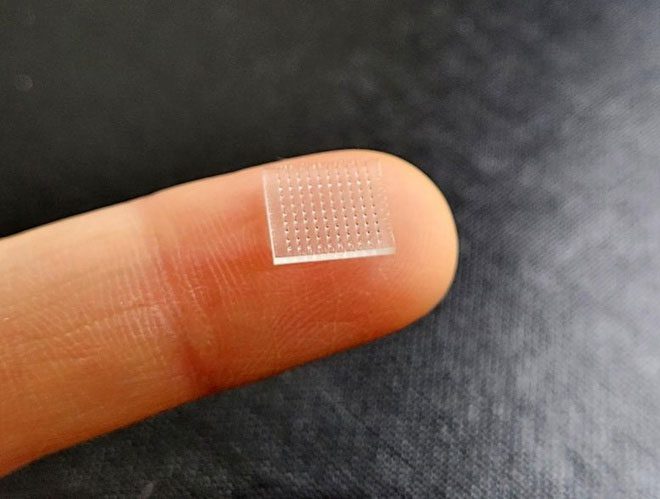Research teams in the U.S. plan to collaborate with Pfizer and Moderna to develop a Covid-19 patch vaccine.
According to CTV News, a research group from Stanford University and the University of North Carolina has published a study on a 3D vaccine patch in the Proceedings of the National Academy of Sciences (PNAS).
Their vaccine patch does not require needles and can potentially elicit a much stronger immune response compared to traditional methods. The patch is non-invasive and designed for single use, eliminating the risk of cross-contamination.
After advancing the technology, the research team will partner with Covid-19 vaccines utilizing mRNA technology, such as those developed by Pfizer and Moderna, to create a new version. They will then test this vaccine technology to alleviate pressure and pain for individuals receiving vaccinations, especially those with a fear of needles.

The vaccine patch features microneedles that deliver medication through the skin without causing pain. (Photo: CTV News).
The polymer patch measures 1cm2 and contains 100 microneedles printed in 3D. Each needle is 700 micrometers long, deep enough to penetrate the skin and deliver the vaccine into the body.
In tests conducted on mice, researchers found that the vaccine patch produced an antibody response over 20 times higher than traditional needle injections after three weeks. This result increased to more than 50 times higher after a month.
Currently, most vaccines, especially Covid-19 vaccines, must be stored in freezers at temperatures of 2-8 degrees Celsius or in ultra-cold freezers at -70 degrees Celsius. Individuals cannot self-administer these vaccines and require assistance from healthcare professionals.
The vaccine patch addresses these issues, allowing individuals to self-administer without the need for special temperature storage. The patch dissolves into the skin, causing no pain. According to Sci Tech Daily, this could facilitate faster vaccination coverage.
The use of vaccine patches has been previously tested by Vaxxas for flu, polio, and measles vaccinations. According to Shaomin Tian, a co-author of the study, the current challenge in manufacturing vaccine patches lies in the mass production of microneedles.
However, the U.S. expert team has resolved this issue through 3D printing technology for microneedles.
This vaccine patch technology was also developed by Dr. Nguyen Duc Thanh and his research group at the University of Connecticut (U.S.) since early 2021. The patch was developed based on the SEAL (StampEd Assembly of Polymer Layer) manufacturing method and computer chip production technology. It creates small, pre-adjusted microparticles that release the vaccine at different times, simulating the process of delivering medication into the body.
This research on the vaccine patch has been published in the biomedical engineering journal Nature Biomedical Engineering and has attracted interest from many scientists worldwide.



















































